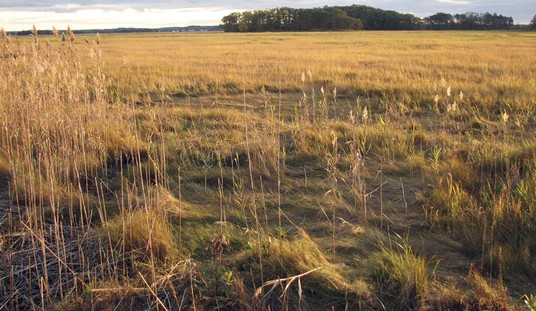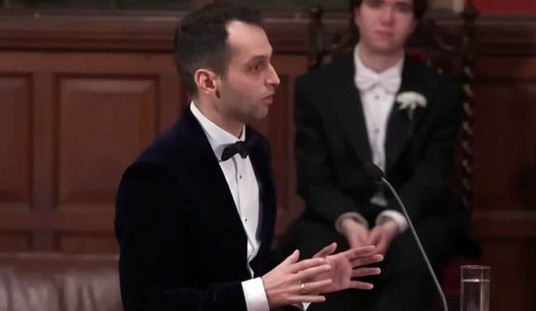Last month a judge ruled that Sarah Palin’s defamation lawsuit against the NY Times could go to trial. Because she is a public figure, Palin still has a tough road ahead of her. She has to prove that the Times wasn’t just sloppy but is guilty of actual malice or, at a minimum, “reckless disregard” for the truth. That won’t be easy but the judge in the case did agree it’s not impossible because the Times’ work, in particular that of now-former editor James Bennet on this piece was spectacularly awful.
Today Columbia Journalism Review published the most detailed breakdown I’ve seen of how that terrible editorial got published in the first place. I’m going to skip over most of the preliminaries here and assume you’re already familiar with the backstory involving Sarah Palin’s Facebook map and the 2011 Tucson shooting by a deranged man named Jared Lee Loughner. All you really need to know is that, despite a lot of media outrage directed at Palin at the time, there has never been even a shred of evidence that Loughner had ever seen her Facebook map or that he cared one way or the other about Palin. His politics, so far as they are coherent at all, appear to have leaned to the left.
All of this seemed to be a long settled-issue until the Times needed to put out an editorial about the shooting of some Republicans by a deranged Bernie Sanders fan in 2017.
The idea for an editorial on the Arlington shooting came from [Elizabeth] Williamson, a Washington-based edit-page writer who had previously reported in the US and abroad for The Wall Street Journal and the Washington Post. A few hours after the bullets flew, according to her deposition, she sent an email to colleagues with the subject line, “Are we writing on the congressional shooting?” An editor responded, “Can’t see it yet, but keep looking. A nutcase who hates Republicans???”
Already it’s clear that this is shaping up to be an editorial about political violence and it looks like someone on the left is responsible.
For the next few hours, Williamson and other edit-page staff researched motives for the shooting. Mid-afternoon, [James] Bennet contributed to an email string: “Did we ever write anything connecting … the Giffords shooting to some kind of incitement?” A colleague offered up a 2011 column in which Frank Rich mentioned Palin’s map but noted that “we have no idea” if Loughner had seen it before the shooting, adding, “nor does it matter.”
Hours before the editorial was published, Bennet is already casting about for a way to compare the shooting at the baseball diamond to the one in Tucson years earlier. Critically, he’s not sure if there’s a connection. A little before 5 pm Williamson submits a draft of the editorial. Here’s what it said about Palin and the map:
Just as in 2011, when Jared Lee Loughner opened fire in a supermarket parking lot, grievously wounding Representative Gabby Giffords and killing six people, including a nine-year-old girl, Mr. Hodgkinson’s rage was nurtured in a vile political climate. Then, it was the pro-gun right being criticized: in the weeks before the shooting Sarah Palin’s political action committee circulated a map of targeted electoral districts that put Ms. Giffords and 19 other Democrats under stylized crosshairs.
Let me just say that what Williamson wrote wasn’t strictly wrong but it was intentionally misleading. Yes, it’s true the right was criticized at the time but it’s also true there were no facts connecting Loughner to the right and the criticism happened despite this. Yes, it’s true Palin’s map had circulated prior to the shooting but, again, that had absolutely nothing to do with Loughner or the shooting.
Williamson is writing in such a way as to suggest there was some grounds for the criticism of both the right and Palin when in fact there was only nakedly partisan outrage. She’s taking the ill-informed speculation of progressives, including several at the NY Times, as if that were proof of guilt. And you have to follow her link and read 10-paragraphs down to find out that no actual connection exists. Why didn’t she just say that? That wasn’t sloppy so much as slippery.
But as slippery as this draft was, it wasn’t nearly enough for James Bennet who decided he needed to dive in an rewrite it. He had a point to make: As bad as the shooting that day had been, it wasn’t as clearly connected to partisan incitement as the Tucson shooting had been.
Was this attack evidence of how vicious American politics has become? Probably. In 2011, when Jared Lee Loughner opened fire in a supermarket parking lot, grievously wounding Representative Gabby Giffords and killing six people, including a nine-year-old girl, the link to political incitement was clear. Before the shooting, Sarah Palin’s political action committee circulated a map of targeted electoral districts that put Ms. Giffords and 19 other Democrats under stylized cross hairs.
Conservatives and right-wing media were quick on Wednesday to demand forceful condemnation of hate speech and crimes by anti-Trump liberals. They’re right. Though there’s no sign of incitement as direct as in the Giffords attack, liberals should of course hold themselves to the same standard of decency that they ask of the right.
Note that this is exactly the thing Bennet had asked about earlier in the day when he claimed not to know if there was a connection. Somehow by that night he was very clear that it existed. Asked about what he added to the editorial by a judge, Bennet claimed that “incitement” didn’t mean incitement:
The judge wanted clarity: “I am asking a question about grammar and sentence structure, which presumably you have some expertise in.” He read the first “incitement” passage back to Bennet and asked, “Doesn’t that mean as a matter of ordinary English grammar and usage that that sentence is saying that the shooting in 2011 was clearly linked to political incitement?” Bennet fumbled for a while, so the judge zeroed in again: “You’re saying that this map circulated by Sarah Palin’s political action committee was a direct cause of the kind of political incitement that you think led to various acts of violence?” Bennet responded, “I would not use the word ‘cause,’ your Honor” and later added, “it wasn’t in my head that that was tantamount to complicity in attempted murder. It’s simply rhetoric.”
Writing that someone had a clear “link to political incitement” when they did not and then claiming later it was “simply rhetoric” should be the definition of reckless disregard for the truth. And once the piece went up there was an immediate reaction from the many people who knew this claim was a lie including some working for the Times.
Ross Douthat sent an email telling Bennet he was wrong and Bennet promised to look at it again in the morning. Another editor sent an email to Williamson asking who was responsible for the line about political incitement and Sarah Palin. Williamson, who apparently hadn’t noticed how much Bennet had revised her draft on this point said that had been in the draft all along.
Then, sometime shortly before midnight, Bennet sent an email to Williamson: “Are you up? The right is coming after us…” He must not have slept much that night because the following morning he had sent an email to his team at 5:08 am: “Hey guys — We’re taking a lot of criticism for saying that the attack on Giffords was in any way connected to incitement.… I don’t know what the truth is here, but we may have relied too heavily on our early editorials and other early coverage of that attack. If so, I’m very sorry for my own failure on this yesterday. … I’d like to get to the bottom of this as quickly as possible this morning and correct the piece if needed.”
So if you’re following this closely, Bennet went from not knowing what was true in the early afternoon, to knowing in the evening that Palin was responsible as he rewrote the editorial, and then back to not knowing the following morning. The Times’ lawyers want to say that this proves it was all a mistake, i.e. he didn’t know he was wrong. But how can that be so if he stated he didn’t know the truth before the rewrite? Once he’d admitted that, wasn’t it his responsibility to research the connection before stating categorically that it existed? But Bennet claimed in his deposition that he never looked at any of the links provided to him, including the one Williamson had buried in her draft.
That may be my favorite part of this story. Williamson wrote a slippery and misleading account of the Tucson shooting which buried the truth about it in a link and, like most readers, Bennet never clicked on it to get the truth. If Williamson had simply told the truth in her draft, i.e. there was no connection, Bennet could never have made his mistake. But clarity was never the goal for this editorial.









Join the conversation as a VIP Member